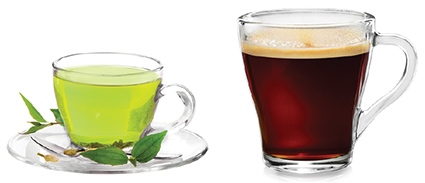Fat-Fighting Foods For You!

Fat-Fighting Foods For You!
11 food sources that will help you shed unwanted body fat.
Keeping your metabolism fired up can be challenging. Your diet needs to be on point, and although cutting calories will create the deficit needed to tap into fat as fuel, it’s not that simple. If your diet is composed of processed, energy-poor foods, your return on investment could be a physique that’s soft and flabby instead of hard and ripped. Eating energy-dense foods that pack in the right nutrients can help turn up the heat on your metabolism and your body’s fat-burning ability!
 Spinach
Spinach
Spinach is one of the most alkaline foods on the planet. Consuming alkaline foods helps maintain acid-base balance in the body, which is essential for fat loss. If you don’t maintain acid-base balance and your body is constantly in an acidic state, your metabolic rate can suffer over time. By regularly including foods such as spinach in your diet, you’ll improve not only your metabolism but also your overall health!
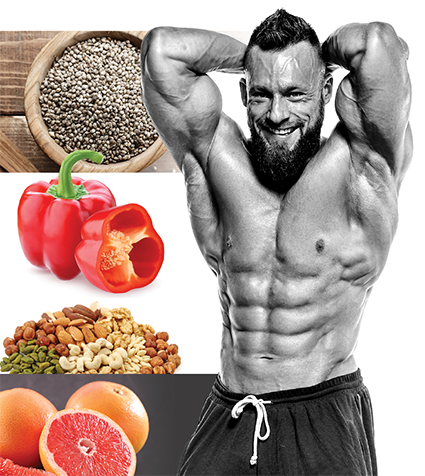
Hemp Seeds
Hemp is considered the best of all the plant-based proteins because it’s a complete protein source, which means it contains all the essential amino acids your body requires. Hemp is also a superfood and a great source of essential omega-3 fatty acids. Essential fatty acids (EFAs) are extremely important for health and fat loss. EFAs work to fight fat through a variety of mechanisms; they can help enhance insulin sensitivity and reduce the amount of circulating glucose in the bloodstream. This helps decrease the amount of glucose that ends up being stored as fat in the body. Consumption of hemp can also help lower blood pressure and cholesterol and even reduce inflammation.
Sweet Red Peppers
Sweet red pepper extract is a non-pungent cultivar of red pepper that contains three known capsaicinoid-like substances that can affect fat loss: capsiate, dihydrocapsiate, and nordihydrocapsiate. Sweet red pepper extract has been studied in humans and proven to increase core body temperature by stimulating the vanilloid receptors, induce heat loss and heat production, and dissipate food as energy. In addition, sweet red pepper extract has also been shown to increase oxygen consumption, uncoupling proteins 1 and 2 (UCP1 and UCP2), and gene transcription of UCP2 mRNA in fat tissue—all of which are technical terms for “more fat burning.”
Grapefruit
Grapefruit is a good source of fibre and vitamin C and it can boost fat loss too! A compound found in grapefruit called naringin is responsible for most of the fruit’s fat-burning properties. Naringin is a flavonoid, and it can support fat loss by stimulating the liver, improving insulin sensitivity, and boosting fat mobilization. In fact, naringin actually stimulates the liver to produce fat-burning enzymes that are usually only produced during a fasted state.
Nuts
Research shows eating tree nuts or even peanuts can help fat loss. Nuts have the ability to decrease appetite, which can improve diet compliance. This is probably due to their fibre content but also to their ability to increase serotonin, a key hormone that works to reduce appetite and increase satiety. Low carb diets are often associated with lower serotonin levels, so eating a one-ounce serving of nuts with a protein shake is a perfect snack to help keep you satisfied.
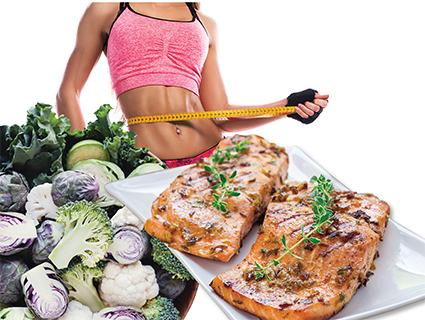
Broccoli, Cabbage, Brussels Sprouts, Cauliflower and Kale
Diindolylmethane (DIM) is a natural compound formed during the breakdown of plants and the digestion of indole-3-carbinol from the Brassica genus of plants. Some of the vegetables of this genus include broccoli, cabbage, Brussels sprouts, cauliflower, and kale. DIM is used for various reasons, but its main mechanism of action is on the metabolism of the estrogen hormone. Estrogen is broken down into various metabolites, each of which has a different effect in the body. The “good” estrogen metabolites (2-hydroxy and 2-methoxy estrogens), work to promote fat loss, boost the fight against certain types of hormonal-related cancers (breast, uterus, and prostate), provide healthy energy levels, support healthy libido, and increase overall well-being. The “bad” estrogen metabolites (16-hydroxy) are related to low energy levels, mood swings, and excess fat gains. DIM can increase the levels of the good estrogen metabolites and decrease the levels of the bad ones. DIM even helps regulate estrogen in a way that will allow users to tap into estrogenic fat accumulation and increase post-exercise fat loss.
Fatty Fish (Salmon, Trout, etc.)
A staple of most “clean eating” diets, fish not only contains muscle building protein but also can put a halt to your hunger cravings. Simply eating more fish has been shown to help regulate the hunger hormone leptin. Increases in leptin induce hunger, while decreases in leptin reduce hunger and help upregulate metabolism, keeping fat oxidation (aka fat burning) active.
Tea and Coffee
Both these beverages contain a well-known metabolic and energetic compound that you’re more than likely already familiar with—caffeine. Caffeine can have a synergistic effect with two other compounds found in tea and coffee. Tea, specifically green tea, contains epigallocatechin gallate (EGCG), while coffee contains chlorogenic acid. EGCG has been shown in multiple human studies to increase 24-hour energy expenditure and metabolic rate. In one study, a green tea beverage containing 625 milligrams of catechins with 39 milligrams of caffeine given to overweight individuals resulted in greater loss of body weight—particularly greater abdominal fat—than those who just received a caffeine supplement. As for chlorogenic acid, it has been shown to help reduce spikes in blood glucose and subsequently insulin release following meal consumption. What’s even more intriguing is that chlorogenic acids seem to have the ability to help regulate where glucose goes, and as we all know, glucose uptake into muscles is favourable over fat storage.
 Chili/Hot Peppers
Chili/Hot Peppers
Chili peppers can help spice up bland foods such as chicken and rice and also provide a fat-burning advantage by suppressing appetite and increasing metabolic rate, due to its active component, capsaicin. This compound activates brown adipose tissue (BAT), resulting in the release of the fat-burning hormone norepinephrine. When norepinephrine is released, it signals a cascade pathway and binds to beta-receptors located in fat tissue. This then stimulates cyclic adenosine monophosphate (cAMP) and allows fat burning to remain “turned on” for longer. Hot sauce, hot chili flakes, or any hot pepper on food or recipes can help make your meals more metabolic.
 Olive Oil
Olive Oil
Olive oil is a great source of monounsaturated fat. This fat has been shown to help increase fat loss when used as part of a low carbohydrate diet. It’s also been linked to improving blood glucose and cholesterol levels. Add a tablespoon of extra-virgin olive oil to your salads or use it when cooking.
Oatmeal
If you’re into fitness, you’re probably into oatmeal. This whole grain provides a great source of long-lasting complex carbohydrates and fibre. One study showed that eating oatmeal for six weeks resulted in inches lost off waistlines, not to mention that subjects felt fuller for longer periods of time. Incorporate oatmeal into your daily meal plan. Make overnight oats and add them to your protein pancakes or eat them with berries or nut butter. One half cup provides about 30 grams of carbs and 4 grams of fibre.
BONUS: FOODS TO AVOID
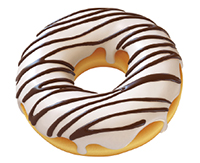 PROCESSED FATS
PROCESSED FATS
& CARBS
Trans fats are artificial fats created using chemical processes that add hydrogen to liquid vegetable oils to make them more solid, and are found in foods that aren’t part of a healthy diet. Trans fats raise your bad LDL cholesterol and lower your good HDL cholesterol. Stick with healthy fats from natural sources.
Processed carbs are made with processed white flours and simple sugars, and usually contain preservatives. They also lead to a spike in blood sugar, and when that occurs, the less fat your body’s burning. In fact, sugar causes you to store fat instead of burning it!
 NON-ORGANIC & PROCESSED MEATS
NON-ORGANIC & PROCESSED MEATS
Meat is a good source of protein, but if you’re eating meat that’s not organic, you could be getting more than you bargained for. Non-organically raised animals are given feed that can contain antibiotics and hormones that can affect your own hormone levels after repeated exposure. After time, this will result in a disruption to fat burning and muscle building. Whenever possible, choose organic meats that come from free-range animals that are hormone-free and fed organic feed (that which is grown in soil that’s free of synthetic fertilizers and pesticides). You also want to steer clear of meats that are processed, such as cold cuts and hot dogs, which are normally high in sodium and nitrates. Studies continue to find strong links between processed meat consumption and various chronic diseases.
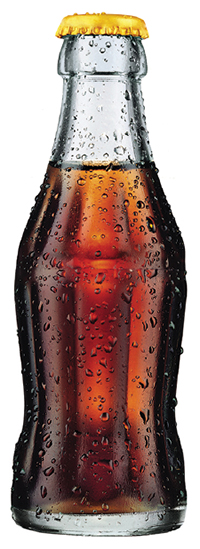 SOFT DRINKS
SOFT DRINKS
… EVEN DIET!
Soft drinks (aka soda pop) in general should never be consumed, whether you’re on a diet or not. The main ingredient is sugar. Drinking pure sugar will only result in substantial fat gains over time. But don’t think diet varieties are any better. Diet soft drinks may not contain calories, but they do contain ample artificial sweeteners. It’s not known yet how these respond in the body, but some preliminary research suggests that sweeteners alter the bacterial composition of the gut. With the new bacterial composition of your gut comes higher blood glucose levels and the development of glucose intolerance. Glucose intolerance can make it harder to process glucose in the body and lead to insulin resistance, which makes it difficult to store or utilize the food you’re putting in your body. Instead of diet soda, stick with plain water with a squeeze of lemon or lime.


